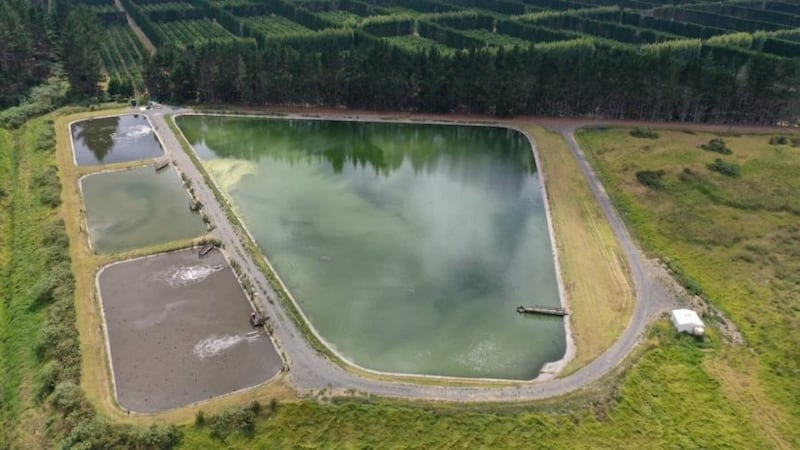A successful co-design concept and a first for New Zealand in wastewater treatment have been developed as part of a project aimed at improving a failing Far North wastewater facility.
Three Ngāti Kahu hapū (Matakairiri, Ngāti Tara, and Ngāti Whata), community representative Andreas Kurmann (Clean Waters to the Sea Tokerau Moana Charitable Trust), and Far North District Council make up the working group known as The Transformation Project, which is tasked with identifying the best option for modernising the Taipa Wastewater Treatment Plant (TWTP).
The committee, which was formed in 2021 as a consequence of an Environment Court appeal, has worked together over the past year to find a way to stop the flow of treated wastewater from the TWTP into the Parapara Stream.
The committee discovered the best option was the slow-rate irrigation (soil moisture deficiency) land discharge system, with the TWTP upgrade to incorporate electrocoagulation (EC) technology, after a series of workshops with engineering firm Beca Limited.
The choice by the organisation to use EC technology was a first for Aotearoa New Zealand, according to CWTS spokesman and biochemist Kurmann, and it would be a less expensive, better solution for the environment.
“It will not only clean the wastewater to a quality that can be safely released to land or water (or for reuse) but will be possible to package and sell the nutrients removed as fertiliser,” he said.
“This will help defray running costs, with the TWTP acting as a model for a circular economy at scale - the first of its kind in this country.”
The Taipa, Mangonui, Coopers Beach and Cable Bay settlements in Doubtless Bay are served by the sewage facility, which is off Ryder Rd not far from the rugby club fields.
A tributary of the Parapara Stream receives treated wastewater before it is released into a succession of settling ponds and finally into the bay at Aurere.
Kurmann said EC technology has been employed for many years abroad during his prior employment, which included managing 44 wastewater treatment facilities in Switzerland.
Kurmann has as a result brought his own technologies to New Zealand and carried out several EC tests, notably those at Mangonui Haulage.
He said that the outcomes had been outstanding and that applying the technology might completely alter the nation's wastewater sector.
“In 2019 we undertook a ‘bench-top’ trial on my kitchen bench where we tested the efficacy of the EC unit,” Kurmann said.
“We were able to remove 95 per cent of the phosphorus, 99.9 per cent of E. coli bacteria and algae, 85 per cent of nitrates and 50-60 per cent of ammonia.
“The EC unit at Mangonui Haulage has also meant the discharge that used to run into the Mangonui Harbour has been cleared and has significantly improved the marine environment at that location.”
The hap and other residents of Doubtless Bay have been protesting FNDC's discharge of the plant's treated wastewater into the waterway for a number of years.
Human waste is seen as hazardous and tapu in te ao Moāri, and as such, it must be kept away from areas where people cook, eat, gather food, converse, or sleep.
It was culturally taboo to release treated sewage into water because wai was a location for harvesting kai and was thought of as a treasure with a mauri .
Trudy Allen, a representative of the Matakairiri hap, has been working to save the wai at Taipa for a number of years.
The Transformation Project, she claimed, had been a great example of Kotahitangi among the various groups, despite some roadblocks along the way.
“We wanted to co-design an outcome, to share our different opinions and explore what we could come up with, which was exciting because we’ve never done that before,” Allen explained.
“It took a good couple of months to get around the mistrust of the past and to figure out a way moving forward.
“But together, we’ve helped each other make this work while maintaining the tikanga of this kaupapa, which for the hapū, was to get the paru out of the wai, regardless of cost.
“I believe this model could even be used for the implementation of the Three Waters programme when that eventually rolls out.”
Total suspended solids (TSS), heavy metals, emulsified oils, bacteria, and other pollutants can all be removed from water using the broad-spectrum treatment method known as electrocoagulation (EC).
Pollutant molecules (negative charged ions) dissolved in wastewater are separated using low levels of electricity and metal plates by interacting with positively charged ions from the metal plates.
Since the linked pollutants are heavier than the molecules of clean water, they may be easily removed by a process known as flocculation.
Kurmann claimed that one EC unit could handle around 20 homes for about $50,000 as opposed to the price of one septic tank per home (about $20,000).

